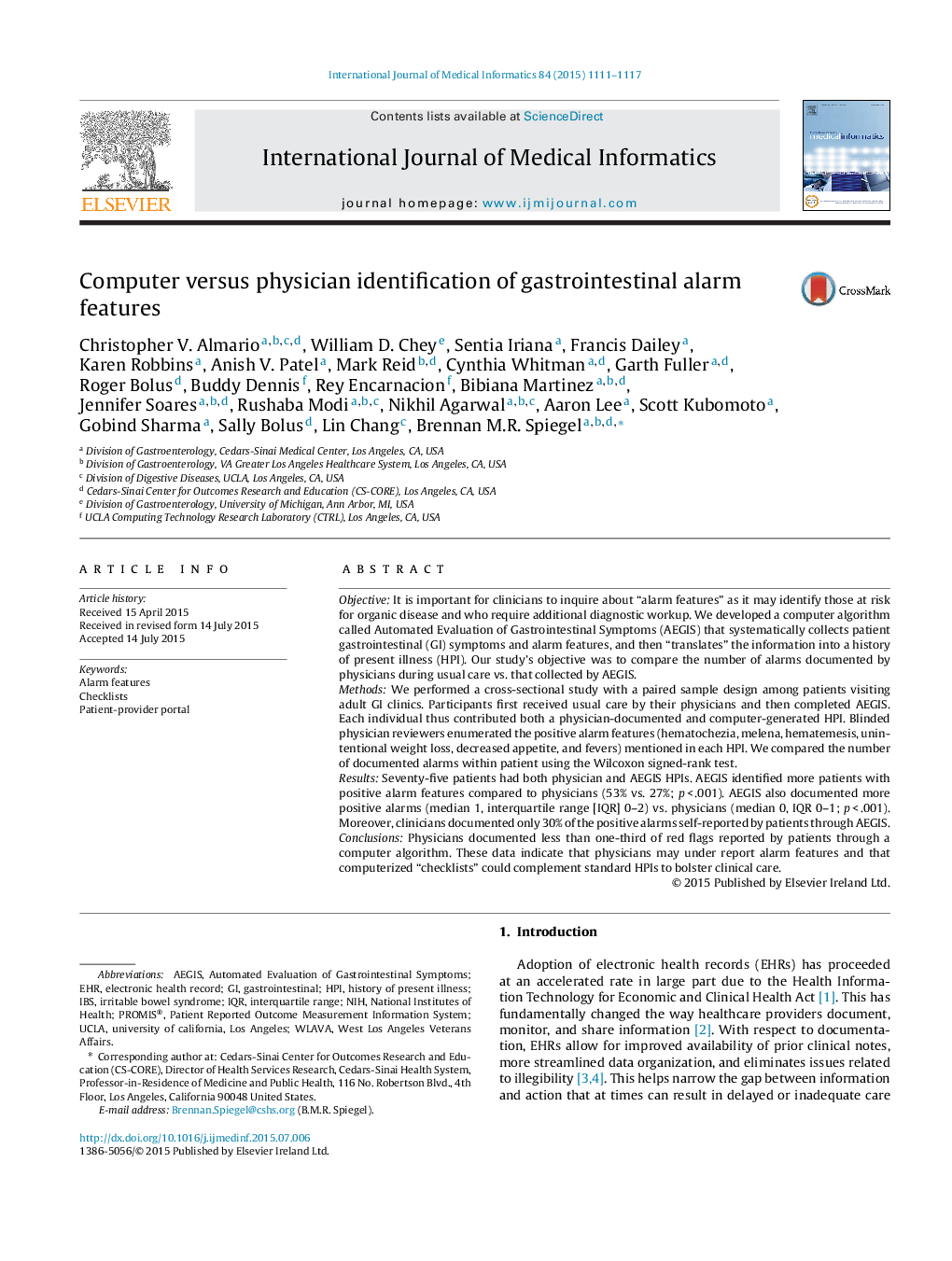| کد مقاله | کد نشریه | سال انتشار | مقاله انگلیسی | نسخه تمام متن |
|---|---|---|---|---|
| 516800 | 1449104 | 2015 | 7 صفحه PDF | دانلود رایگان |
• Inquiring about “alarm features” may identify patients at risk for organic disease.
• We created a computer algorithm called AEGIS that systematically collects patient alarm features.
• Physicians under report alarm features when compared to the AEGIS algorithm.
• “E-checklists” could complement standard medical histories to bolster care.
ObjectiveIt is important for clinicians to inquire about “alarm features” as it may identify those at risk for organic disease and who require additional diagnostic workup. We developed a computer algorithm called Automated Evaluation of Gastrointestinal Symptoms (AEGIS) that systematically collects patient gastrointestinal (GI) symptoms and alarm features, and then “translates” the information into a history of present illness (HPI). Our study’s objective was to compare the number of alarms documented by physicians during usual care vs. that collected by AEGIS.MethodsWe performed a cross-sectional study with a paired sample design among patients visiting adult GI clinics. Participants first received usual care by their physicians and then completed AEGIS. Each individual thus contributed both a physician-documented and computer-generated HPI. Blinded physician reviewers enumerated the positive alarm features (hematochezia, melena, hematemesis, unintentional weight loss, decreased appetite, and fevers) mentioned in each HPI. We compared the number of documented alarms within patient using the Wilcoxon signed-rank test.ResultsSeventy-five patients had both physician and AEGIS HPIs. AEGIS identified more patients with positive alarm features compared to physicians (53% vs. 27%; p < .001). AEGIS also documented more positive alarms (median 1, interquartile range [IQR] 0–2) vs. physicians (median 0, IQR 0–1; p < .001). Moreover, clinicians documented only 30% of the positive alarms self-reported by patients through AEGIS.ConclusionsPhysicians documented less than one-third of red flags reported by patients through a computer algorithm. These data indicate that physicians may under report alarm features and that computerized “checklists” could complement standard HPIs to bolster clinical care.
Journal: International Journal of Medical Informatics - Volume 84, Issue 12, December 2015, Pages 1111–1117
